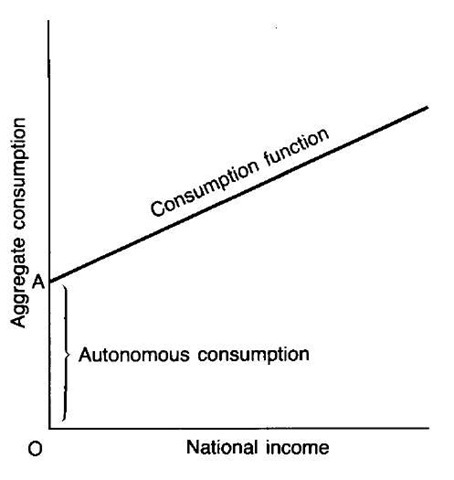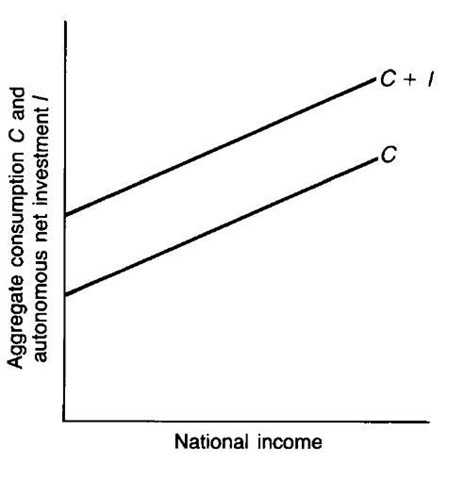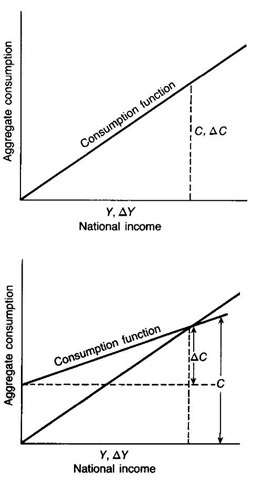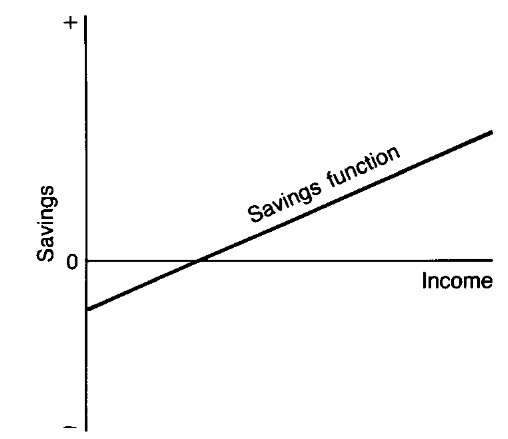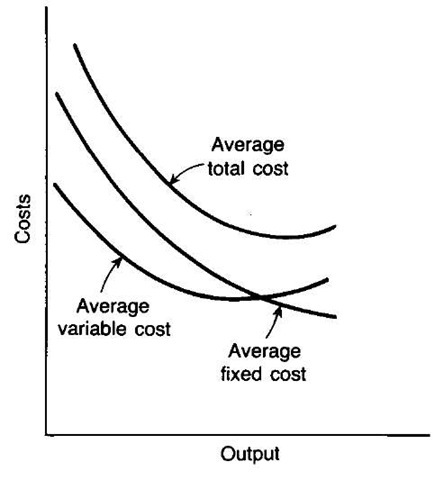apprenticeship
A period of training in a firm which enables a trainee to learn a craft under the supervision of a skilled worker. The length of the apprenticeship varies from trade to trade and country to country. Adam smith noted that in ancient times the period was commonly seven years, even in universities for studying for a Master of Arts degree. Apprenticeships have long provided technological education and transmitted sophisticated manual skills from one generation to another. But critics have viewed them as a union restrictive practice for they have been used to limit the number in a trade, and hence to increase average earnings. Recurrent skilled labour shortages in engineering have been attributed to the system.
appropriate technology
Labour-intensive small-scale methods of production using renewable energy. A technology advocated for Third World countries.
Appropriation Bill
A us federal legislative bill authorising expenditure for a particular purpose, e.g. defence, which has to be passed by both the us House of Representatives and the senate. Annually all the bills are expected to be reconciled by a Reconciliation Bill by the end of June; if reconciliation is impossible, a continuing resolution is passed which permits departments to continue at their current expenditure levels.
approximate equilibrium
A disequilibrium price, usually manifest in the existence of excess demand. This is close to an equilibrium price.
Aquinas, St Thomas, 1225-74
The leading medieval economic and social thinker and theologian, the most prominent of the schoolmen. His interpretation of the teaching of aristotle and the early christian Fathers is set out in his massive Summa Theologica. He expounded the doctrine of the just price, permitted the charging of interest (when there was a risk that the lender would not be paid on time) and supported the institutions of private property and trade (if the public good is promoted).
Arab Common Market
A common market set up in 1964 with the aims of free movement of labour and capital, free trade and unimpeded transport access among the member countries which, originally, were Jordan, Kuwait, Morocco, syria and the united Arab Republic (Egypt and syria).
Arab Maghreb Union
An economic union of Morocco, Algeria, Tunisia, Mauritania and Libya set up in 1989. Progress towards free mobility of labour and capital and the creation of a common or single currency has been slow.
arb
Arbitrageur, especially a speculator in the stocks of companies likely to be taken over by others.
arbitrage
An investment strategy taking the form of a simultaneous purchase of an item in one market and sale of it in another with the expectation of a positive return. profits can often be made from small differences in price. This is common in currency and commodity markets and is a force producing price equalization, after allowing for transport and transaction costs and risk.
In the case of a currency market, arbitrage continues until the cross exchange rates are consistent. For example, if initially US$1 = DM4, DM1 = 2 guilders and US$1 = 6 guilders, the correct cross-rate should be DM1 = 1.5 guilders. The arbitrageurs sell spot and buy forward if they believe that the value of a currency is falling: they benefit from the difference between two prices, with the forward contract protecting them from a fall in the exchange rate.
arbitration
Settlement of a dispute by referral to a third party, used in industrial relations and in many commercial disagreements. The arbitrator may be a court of law, an independent arbitrator chosen by the parties in dispute or a permanent government body, e.g. the advisory, conciliation and arbitration service (UK). As arbitration is either voluntary or imposed, it can be binding, compulsory, mandatory or unilateral. Landlord and tenant, shipping and building contracts often use this method of resolving conflicts. Private arbitration, which may be instituted in advance by a contractual term, is cheaper and quicker than resort to litigation.
arc elasticity
The elasticity of demand over a portion of a demand curve or the elasticity of supply over a section of a supply curve. It is calculated from the midpoint between old and new prices and quantities on the curve, using the ratio of the percentage change in quantity to the percentage change in price, i.e.
where Pi and Qi are the price and quantity originally and P2 and Q2 are the price and quantity after the change. It provides an average of point elasticities.
Aristotle, 384-22 BC
One of the earliest writers on economics who anticipated many later debates on value, money and economic systems. In the Nichomachean Ethics, Topic V, he discussed the nature of value in the context of a discussion of justice; in Topica, he anticipated subsequent ideas of value based on utility. He supported the idea of private property on the grounds that it leads to increased production and clearly saw that money has the important functions of serving as a unit of account, a medium of exchange and a store of value.
arithmetic mean
The sum of a set of values divided by the number of values in that set.
arithmetic progression
A series of numbers increasing by a constant increment called a common difference, e.g. 2, 4, 6, 8. malthus asserted that the means of subsistence increases arithmetically.
ARMA
Autoregressive moving-average model. This model of a stationary random process, i.e. a process whose mean is constant over time, recognizes that a combination of moving-average and autoregressive models is necessary.
Armington assumption
The supposition that internationally traded products are differentiated according to country of origin.
Arrow-Debreu model
An economic theory concerned with establishing the existence of an equilibrium for an integrated model of production, exchange and consumption. The two theorems produced by the authors were that (1) a competitive equilibrium exists if every individual has initially some positive quantity of every commodity available for sale and (2) there are individuals capable of supplying a positive amount of at least one type of labour with positive usefulness in the production of desired commodities.
Arrow-Debreu security
A financial instrument, or combination of securities, with a fixed payment of one unit only according to a specified contingency.
Arrow, Kenneth Joseph, 1921
US economist, educated at City College, New York, and Columbia University; professor at Stanford University from 1953 to 1968, and from 1979, with an interlude at Harvard from 1968 to 1979. His study of social choice led him to formulate the impossibility theorem, his most famous contribution to economics. Also, he and debreu proved in an Econo-metrica article of 1954 that a multimarket equilibrium under perfect competition required the existence of forward markets for all goods and services. His work on risk aversion and on growth theory (particularly learning-by-doing) is also notable.
In 1972, he shared the nobel prize for economics with hicks. The range of his contribution to economic theory and his interest in the functioning of a general equilibrium system are evident in his Collected Papers. He shows how he developed the ideas in Hicks’s Value and Capital to explain what it means to be better off. His analysis of voting procedures advanced the study of social choice. Also, he has written much on the economics of information.
artificial barrier to entry
A barrier to entry of firms into a market or industry erected by a government or the existing firms and not by natural market forces. Governments may insist on licensing new entrants; firms may refuse to provide access to existing technology.
artificial currency
A currency unit used either as a common unit of account for international transactions or as an international reserve asset. Principal examples of these are special drawing rights, european currency units, european units of account and, in general, baskets of currencies. Such currencies are very useful for international accounting in times of volatile exchange rates.
A share
1 A Chinese stock market share payable in the Chinese currency, the renminbi. 2 Usually a non-voting share of the equity capital of a UK company. These shares have been created to enable the founders of a company to retain control. A shares trade at lower prices than B shares as they are useless to other companies attempting to gain control of the company. Gradually these shares have been accorded voting rights as the London Stock Exchange regards them as unfair.
Asian Development Bank
Bank founded in 1966 with capital provided by Asian countries, the USA, Canada, the UK and West Germany on the recommendation of the United Nations Economic Commission for Asia and the Far East. It covers half of the world’s population. It is based in Manilla, the Philippines, and is dominated by the Japanese, the largest contributor of its capital. Its conservative lending policy has chiefly favoured loans for specific projects, e.g. to build ports, roads and bridges, rather than sectoral lending to restructure troubled economies. It has increased its lending to the private sector and has a joint venture with commercial banks, the Asian Finance and Investment Corporation (AFIC).
Asian option
A derivative settled in cash whose pay-off is related to the average price of the underlying asset in a certain time period. Also known as an average option.
Asiatic mode of production
The most primitive form of production, according to marx, in which self-sufficient agricultural communities are despotically governed. The state, through taxation, appropriates the economic surplus of the agricultural sector to finance the building of the country’s infrastructure. The concept was developed in the 1950s and 1960s to examine more aspects of state formation and the formation of classes in primitive communities.
ask price
The selling price of a security set by a financial institution.
asset
1 A resource with a market value.
2 A unit of wealth capable of earning an income.
3 A large enough estate to discharge the burden on an heir or executor.
Real (or tangible) assets include land and machinery; intangible assets include goodwill and patents; financial assets include cash and stock market securities.
asset card
A debit card.
asset motive
A motive for holding money. To avoid risky investments, people are prepared to sacrifice high returns by keeping their portfolios in a liquid or near-liquid form.
asset specificity
The unique character of a durable asset, e.g. a machine, a skilled worker or a production site, which means that it has a low return in other uses. For many specific assets the cost of employing them is in the nature of a sunk cost.
asset stripping
The sale of parts of a company which, in many cases, has recently been taken over by another company. Large holding companies have been built up in the past this way as each stripping provides resources for another company acquisition. By selling off parts of a company previously undervalued, finance for further acquisitions is obtained.
asset sweating
Raising bank finance on the security of the property owned by a company. sweating can also be effected by securitization of the property.
assistance-in-kind
A grant expressed in goods and services; an alternative to a cash gift.
assisted area
A region or smaller area of a country eligible for grants and soft loans under the regional policy of a national government or the european union. The criteria for assistance to a region include its rate of unemployment, the decay of its infrastructure and its participation in a larger plan to achieve interregional balance.
Association of International Bond Dealers
An association of 850 dealing firms mainly outside the UK. Under new rules in force from 1987, interdealer brokers are only able to deal with reporting dealers. Every evening there is electronic reporting of closing bids, offered quotations and that day’s highest and lowest prices for each bond in which the association trades. in January 1992 became the International Securities Market Association.
Association of South East Asian Nations
The trading association of Brunei, Indonesia, Malaysia, the philippines, singapore and Thailand founded in 1967. Its principal task has been to arrange preferential import tariff rates on trade between its members.
Although 19,000 products are given preference, they have little impact on freeing trade as the major items (about 95 per cent of trade) are excluded from the list. ASEAN hopes by the year 2000 to free most of the intra-association trade and be more than an association representing this area in international negotiations. industrial joint ventures with non-Asian countries, a new insurance company and improved transportation arrangements are likely to promote further economic integration. it was agreed in 1987 that goods at present enjoying preferential tariffs should have the preference increased to 50 per cent of the tariff and goods enjoying preference for the first time should have 25 per cent of the tariff.
asymmetric information
information possessed by one side of a market only. if, for example, buyers but not sellers have relevant information, they will be at an advantage. in labour markets, employers usually know more about the present and future financial state of their firms than trade unions and thereby have a bargaining advantage in wage negotiations. This view of information has also been incorporated into models of industrial organization and of the valuation of public goods.
atomistic competition
Similar to perfect competition in that there are a large number of buyers and sellers, each with no significant influence on the market, behaving like atoms – very small but with a joint importance. This view of competition is based on an individualistic view of economic activity.
at the money
The state of an option where its underlier equals its strike price.
at-will employment contract
A labour contract under which an employer can lawfully dismiss or retain an employee whether the reason is good or not.
auction
A type of selling in which a system of bidding determines the price and the successful buyer. walras showed the crucial role of auction models in his discussion of tatonnement, using the idea of crying out prices to describe the movement of a market to equilibrium with supply equal to demand.
audit market
The accounting firms and their clients concerned with the checking of company accounts to ensure that legal requirements are met and that financial transactions are accurately recorded. A free audit market is proposed for the european union so that the same auditors could examine the accounts of all of a firm’s European subsidiaries.
augmented GNP
Gross national product plus the value of public goods and services of all kinds, whether marketed or not. This measure takes into account the criteria for a good environment by measuring ‘goods’ net of ‘bads’.
Australian Industries Preservation Acts 1906-50
Commonwealth of Australia statutes modelled on the sherman act of the USA: these have created a competition policy for Australia. The difficulty of successfully prosecuting firms under them has caused antitrust actions to be more a concern of the individual Australian states.
Australian Loan Council
An agency of federal government, founded in 1928, to raise loans for state governments and for public utilities.
Austrian School
A prominent school of economics which has provided an opposing view to much of mainstream economics since it was founded by Carl menger in the 1870s. At its inception, the school shared with jevons and walras an interest in expounding a subjective theory of value based on marginal utility but it did not use a mathematical approach as it sought to deal with essences and not quantities. The ‘Austrians’ opposed the popular contemporary german historical school partly because they took the view that economic laws are based on simple elements such as needs and satisfaction expressed as invariable sequences not influenced by time and space.
Menger’s leadership of the school was taken over by boehm-bawerk and wieser. Boehm-Bawerk extended the analysis of consumer valuation to explain costs, prices, interest rates and economic growth. However, he is chiefly known for his time analysis of capital as a roundabout method of production and his interest rate theory. Wieser used his broad knowledge as an economist, sociologist and historian to examine all social phenomena with an attitude to economic policy which transcended both laissez-faire and interventionist approaches. His idea that the chief importance of prices is to provide information on all economic conditions was to inspire both mises and hayek; his concept of entrepreneurial leadership was followed by schumpeter in the latter’s theory of development. Both Mises and Schumpeter were members of Boehm-Bawerk’s celebrated seminar.
After the collapse of the Austro-Hun-garian Empire at the end of the First World War, the members of the school dispersed to the UK, USA and Germany. Prominent new members of it included haberler and machlup. In the late twentieth century hayek and Ludwig lachmann were leaders. Later Austrians have attempted to use the basic concepts of radical subjectivism, human purpose and a spontaneous market order to contribute to modern debates about expectations, competition and economic welfare. Their policy concerns have included the relationship between monetary policy and the trade cycle, free banking and criticism of socialism.
autarky
1 Self-sufficiency.
2 A completely closed economy which does not engage in international trade. Although many economies have wanted such independence from the rest of the world to increase employment, their enthusiasm has been tempered by an examination of the other effects of protection.
autocorrelation
The state of an econometric relation such that some or all of the explanatory variables are highly correlated with each other. Poor specification of the relationship between variables in the regression equation is often the cause.
auto-economy
That part of an economy, according to hicks, which finances itself from its own stock of liquid assets.
autogestion
A French approach to workers’ participation in the running of enterprises, proposed after the 1968 uprisings in France. This philosophy of management holds that enterprises should be less hierarchical, with all employees participating directly in decision making, especially about work organization, promotion and other employment rules, technology and methods of production. This democratization would include a new framework for discussions between enterprises.
automated clearing house
An organization for the electronic matching of cheques drawn on different banks so that interbank indebtedness can be settled.
Automated Real-time Investment Exchange
A computerized arrangement for dealing in shares set up by merchant banks in the city of London in 1974 to bypass the international stock exchange and thus save brokers’ commission. It never attracted a high proportion of the London trading volume.
automated teller machine
A cash-dispensing machine of a bank or other deposit-taking institution. The machine allows customers continuous access to their bank deposits. Other services provided by automated teller machines include the production of bank statements.
automatic neural network modelling
A method of data analysis using the analogy of the neural networks in the brain. A’training set’ of data based on input-output relationships for different cases is used to compute patterns. Automation of these procedures reduces the complexity of network construction. This analytical approach is used in financial econometrics.
automatic stabilizer
A built-in feature of tax structures and public expenditure programmes. It reduces fluctuations in an economy, making it respond more easily to shocks. prominent examples of stabilizers include progressive taxes (which prevent post-tax income rising at the same rate as pre-tax income) and unemployment insurance (which prevents personal income from falling below a predefined ‘floor’). The gold standard was a major type of automatic stabilizer. All these stabilizers have the characteristic of preventing the rise or fall of national income, and consequently employment, being as great as it would be in the absence of a government with an active fiscal policy. It is the experience of most countries that as these stabilizers are insufficient in themselves to remove fluctuations they need to be combined with discretionary changes in taxation and public expenditure.
autonomous consumption
consumption unrelated to the level of income. At zero income, in the short run, there can be autonomous consumption to maintain physical existence. It is financed by borrowing and the liquidation of assets.
autonomous expenditure
Expenditure independent of the level of income, often because of its necessary character.
autonomous investment
Iinvestment independent of the level of income. It can be affected by changes in interest rates and in the ‘animal spirits’ of entrepreneurs. It is shown by a parallel shift in the aggregate demand schedule.
Autumn Statement
uK statement on public expenditure produced separately from the March budget until the budget date was changed to November in 1994.
availability thesis
The proposition that a high proportion of international trade is an exchange between goods which are only available in one or a few countries. elasticity of supply in one country and inelasticity of supply in another give rise to trade. Some new products are only available in some countries, partly because of the nature of their patent protection.
average
A value showing the central tendency of a set of data and often used to compare that set with others; for example, the average age of the Finnish population is compared with the average age of the Romanian population.
average incremental cost
change in total cost divided by change in output; an approximation to marginal cost necessary because marginal cost refers to such small quantity changes that in practice it is difficult to measure it. In the 1978 guidelines for UK nationalized industries it was used as a measurable alternative to marginal cost. Because it is a rough approximation, it fails to give precise guidance for the expansion of integrated systems.
average propensity to consume
The ratio of a consumer’s total consumption to his or her total income. For low-income groups the average propensity to consume is unity, or close to unity, as there is no surplus over expenditure available for saving. As income rises and basic consumer goods have been purchased, this propensity declines; also it varies over the life cycle (see life-cycle hypothesis). If a graph of the consumption function passes through the origin, the average propensity to consume (C/Y) equals the marginal propensity to consume (ac/a Y) at all levels of income and is unity; a consumption function with a constant slope has the same marginal propensity to consume at all income levels.
average propensity to save
Total savings as a proportion of total income. This proportion is likely to be negative at low levels of income as poor households often need to borrow to finance basic consumption; at higher income levels, households can afford to save because their consumption needs have been met. The average propensity to save for a national economy will depend on its income distribution and average level of income.
average tax rate
The fraction of a person’s total income which is paid in taxes. A person with a gross income of £50,000 per year, paying £10,000 in tax, will have an average tax rate of 20 per cent. This tax rate is usually contrasted with the marginal tax rate and is calculated for some or all of the taxes paid by a person.
average total cost
Total costs of a firm divided by its output. sub-components of average total cost are average fixed cost (fixed cost divided by output) and average variable cost (total variable cost divided by output). The average total cost curve will fall if there are economies of scale and rise if there are diseconomies. In the short run, such curves are typically u-shaped; in the long run, L-shaped.
Averch-Johnson effect
The misallocation in resources resulting from regulatory agencies relating price levels to a ‘fair’ rate of return. Averch and Johnson asserted that regulation of this kind would fail to minimize social cost: a firm would not equate marginal rates of factor substitution to the ratio of factor costs. Firms would have an incentive to move into other regulated markets where they would be able to operate at a loss and drive out the lowest cost producers.
axioms of preference
The assumptions necessary for consumer rationality. They are completeness (that a consumer can order all available combinations preferred), transitivity (if A is preferred to B and B to C, then A is preferred to c), selection (the consumer chooses the most preferred state), non-satiation (the consumer prefers more to less of a good) and continuity (there is a boundary in the form of an indifference curve separating preferred from non-preferred combinations of goods).
Ayres, Clarence Edwin, 1891-1972
A leading US institutionalist economist who was educated at Brown and chicago Universities. He taught philosophy at Chicago, Amherst and Reed Universities from 1917 to 1930 and was Professor of Economics, university of Texas, from 1930 to 1968. veblen and the philosopher John Dewey (1859-1952) were major influences upon him. His powerful analysis of economic progress asserted that the technology essential to industrialization is constantly in conflict with established institutions which approve of ceremony to protect vested interests. Ayres’s work has made a great impact on development economics.

